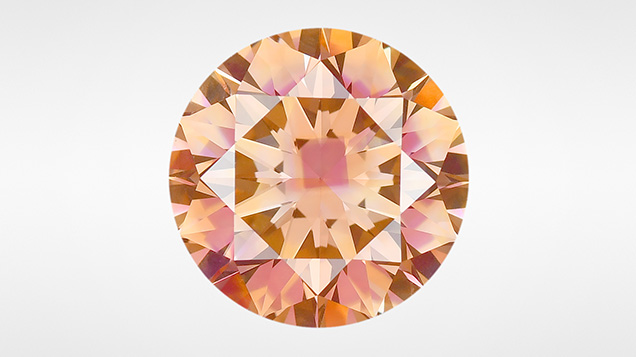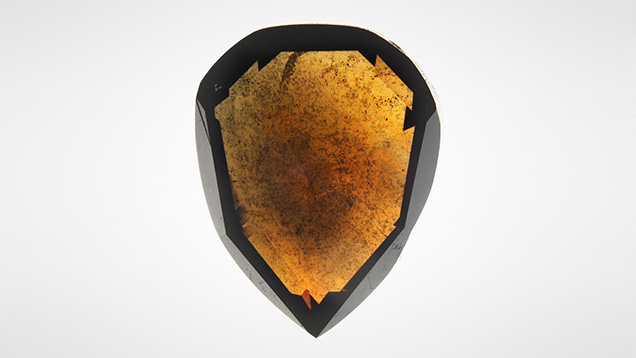New and Notable Finds from the GIA Lab: Winter 2023
April 30, 2024
These new finds from the GIA lab include unusual colors and patterns in natural and laboratory-grown diamonds.

HPHT Diamond with Unique Color Zoning
The GIA laboratory in Carlsbad recently encountered a 2.20 carat laboratory-grown diamond that received a color grade of Fancy Deep brownish orange. This diamond was grown via the high-pressure, high-temperature (HPHT) method and received subsequent HPHT treatment. These treatment processes created crystal lattice defects that resulted in the interesting coloration of the stone as well as a dramatic pink square positioned just under the table facet. Learn what color the pink square changes into when viewed through the pavilion.

Natural Bicolor Diamond
This unusual 0.63 carat diamond exhibits two distinct color zones, one that was graded Fancy Dark orangy brown and one that was graded Fancy Dark brown greenish yellow by GIA. Bicolor diamonds are incredibly rare and are typically caused by a combination of different crystal lattice defects. What makes this diamond even rarer is that its brown greenish yellow color zone displays chameleon properties, meaning it temporarily changes color upon heating or when left in darkness for an extended period of time. Discover what geologic conditions created this one-of-a-kind diamond.

Brown Diamond Containing Carbon Dioxide
The Carlsbad laboratory recently examined a 1.03 carat natural Fancy Dark brown diamond with uneven color zoning and numerous black hexagonal inclusions. Upon analysis, the diamond was determined to contain submicroscopic solid inclusions of carbon dioxide. This brown diamond containing carbon dioxide is one of the few of its kind that GIA has encountered. Explore what was trapped inside these carbon dioxide inclusions.
Phoebe Shang, a senior writer at GIA, is a Graduate Gemologist.



